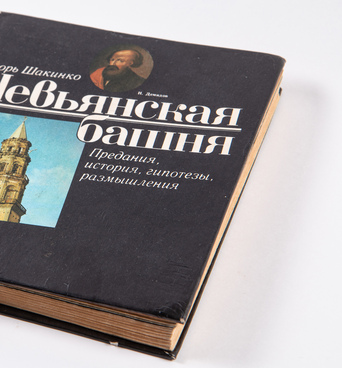Blacksmithing was one of the most widespread trades in the village of the Nevyansk plant in the 18th — early 20th centuries. This was due to the presence of a metallurgical plant, the availability of skilled craftsmen and raw materials for production. The blacksmith’s indispensable tools included bellows, which were used to blow air to the fire, as well as a hammer, an anvil, pliers, and a vice.
Initially, pincers were a tool intended to remove hot metal blanks and crucibles with molten metal from forges. Blacksmiths also used pincers to hold various pieces of hot iron during forging. Archaeologists have proved that the prototype of pliers — tongs with a rod — was invented back in the Neolithic era. Back then this instrument was made from burnt wood.
The first images of hand pliers date to the 6th–5th centuries BC. In the Bronze Age, blacksmiths used primitive pliers as clamps. Now those tools are found in the burials of blacksmiths — the burial goods indicate that the deceased had a special, fairly high social status. Together with an anvil and a hammer, pliers were an attribute of numerous ancient Greek and Roman blacksmith gods and lords of thunder (Thor, Vulcan, Hephaestus, and so on).
Blacksmith pliers were always hinged and had two halves. Based on their design and size, the pliers are strictly divided into blacksmith pliers and forging pliers. The first ones were used by the blacksmith in the forge, the second ones were used only by the metallurgist. According to their shape and size, forging pliers can be divided into a group of large, rough pliers for large forgings and a group of small, one-handed pliers with well-fitted jaws for medium and large products. The jaws of both species in all specimens lie one on top of the other across the entire width of the cheek. The average length of large pincers ranges from 40 to 45 centimeters. The average size of small pincers is about 20 centimeters. The smallest pincers are 14.5 centimeters long. All pincers were made from ordinary bloomery iron.
The pliers were large and had large, rounded ends to grip the bloomery iron. They also had long handles. For example, they were 77 centimeters long. Round jaws to press large pieces of bloomery iron were 16.5 centimeters long.
Later, pincers found their way into construction work, plumbing, and were widely used in electrical installation work. Depending on their purpose and design, various pincers are called side cutters, pliers, round nose pliers, wire cutters, and flat-nose pliers.




